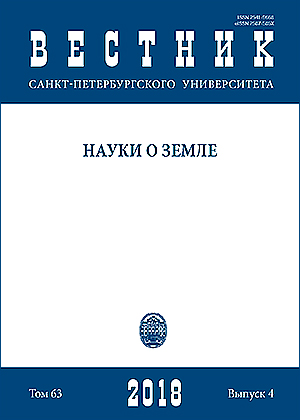Interpretation of Self-Potential pumping well
DOI:
https://doi.org/10.21638/spbu07.2018.408Abstract
We carried out a numerical analysis of Self-Potential (SP) signals produced in the course of pumping test experiments. We studied SP responses on the basis of the GWFGEM code. In the models, the pumping well partially penetrated the aquifer. We considered the short well filters (1/5 of the aquifer thickness) and longer filters penetrated up to 4/5 of the aquifer thickness. Numerical modelling results revealed an increased sensitivity of the SP signals to the length and the depth of the pumping well filter compared to the drawdown. The pumping well casing and screen material (electrically conducting, metallic vs. electrically insulated, PVC) determines SP distributions on the ground surface. For the insulating casing, the sensitivity of SP signals to the drawdown variation is small. In contrast, SP distribution on the ground surface for the conducting case is closely related to the drawdown distribution and can serve as a proxy for the drawdown. For a reference model of the water pumping well, the relationship between SP and drawdown is linear. In the case of short screens, this relationship is logarithmic. Time variations of SP show similar patterns for all studied models for both insulating and metallic casings; only the magnitude of variations was found to be different. These results should be considered in the modelling and interpretation of SP data obtained in pumping test experiments.
Keywords:
pumping test experiment, well casing, partially penetrating pumping well, draw-down, self-potential, numerical modelling
Downloads
References
References
Downloads
Additional Files
Published
How to Cite
Issue
Section
License
Articles of "Vestnik of Saint Petersburg University. Earth Sciences" are open access distributed under the terms of the License Agreement with Saint Petersburg State University, which permits to the authors unrestricted distribution and self-archiving free of charge.






